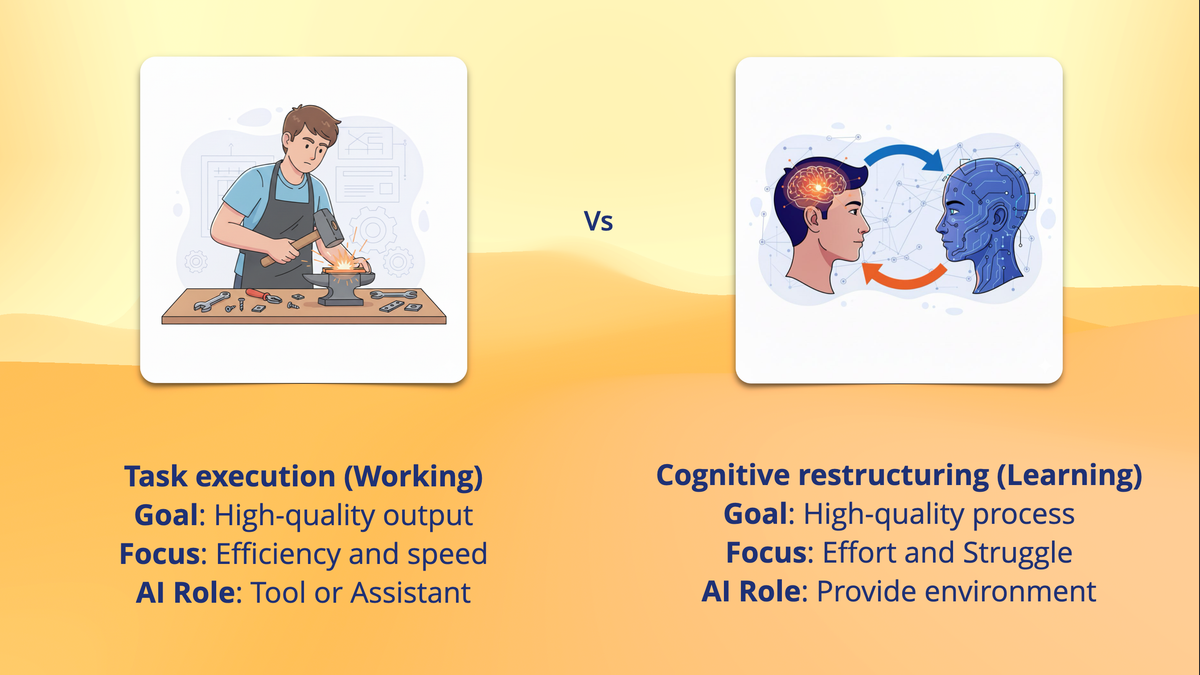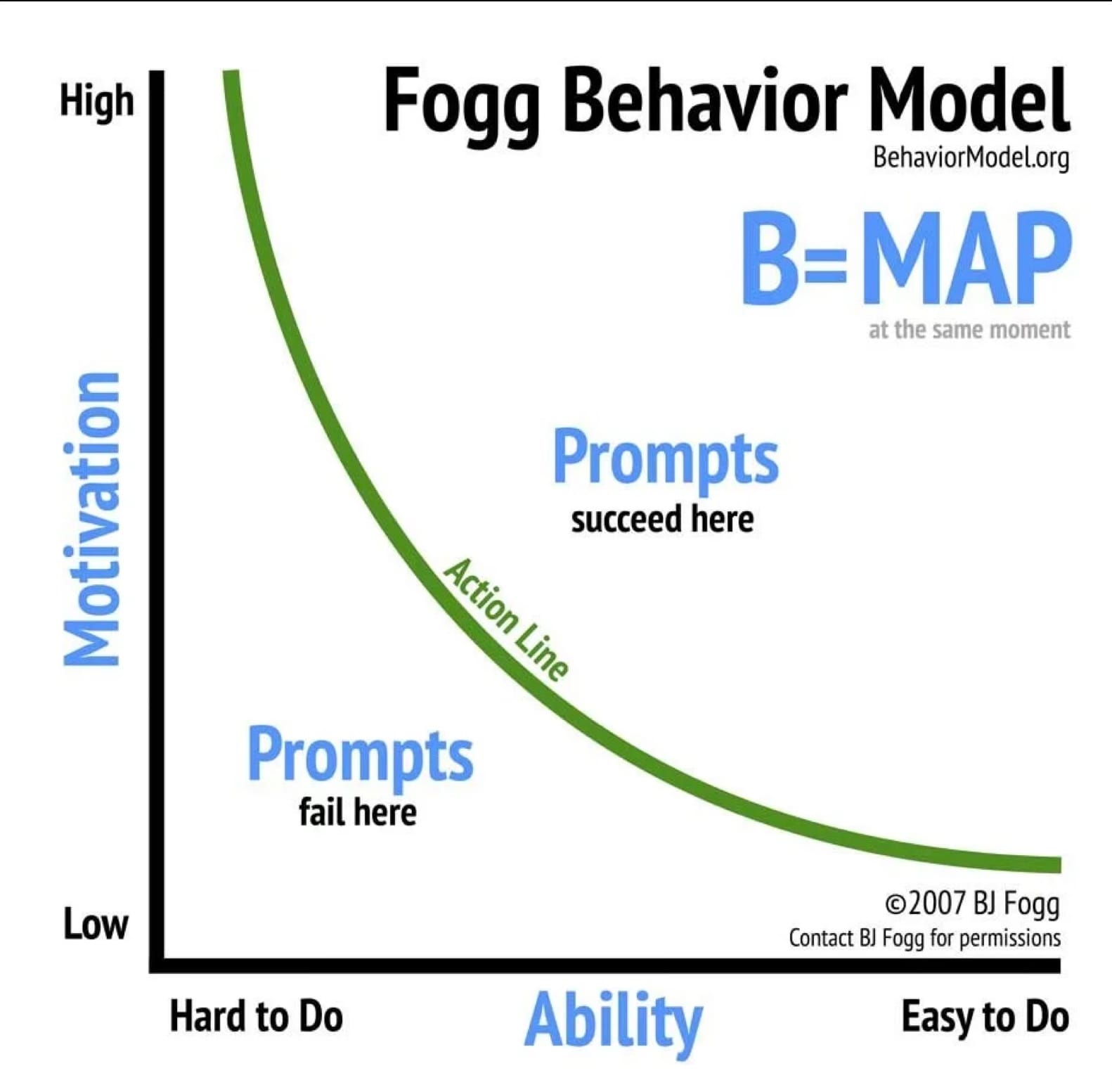AI for work vs AI for learning: are you getting it right?

Mostly all I’m doing these days is thinking about AI and how to make it beneficial for all.
But before we can even talk about using AI, I want to be clear the AI I’m talking about here:
- AI Science: This is a public good. It's the amazing result of decades of work by researchers and teams all over the world coming together. The fact we can turn piles of our data into machines that can do so much of what we can do is simply astounding.
- AI Companies: These are businesses taking and using that public research and focusing on profits, scaling, and exploitation, which introduces significant risk. When you see AI being shoved into every corner of a product, it's often driving the creation of billion-dollar data centers with enormous ecological footprints and very hazy understandings or responsibility about how society is being affected.
In short, AI is not “ChatGPT” (ugh). AI can run on any hardware, can do many different things and be as open as any other technology.
In this article I’m focussed on AI as a science and a tool, and I’m not dealing with the ethics around AI companies. That’s for other articles!
The tools can certainly be powerful, but I find the conversation around them, especially in the education world, is often muddled. For example, we get confused about how to deal with AI in the context of assignments, or we get hung up on how a specific .com service behaves.
I think the main reason is that we're conflating two very different things: AI for Work and AI for Learning. We need to get this right.
The Critical Difference: Task vs. Process
The simplest way to understand this is to separate the output from the process.
- Work (Task Execution): When your goal is a high-quality output (an email, a report, a piece of code) and your focus is on efficiency, AI is a phenomenal tool. You can offload (some of) the cognitive work to a machine to get a job done.
- Learning (Cognitive Restructuring): When your goal is a high-quality process (to build a new skill, change your thinking, or deepen your understanding) your focus must be on the brain’s effort and struggle.
Getting an AI to write your assignment for you is like sending a friend to the gym to do your workout. It doesn't help your muscles; it helps theirs. You get the output (the completed workout), but you miss the entire benefit from the process of struggle and growth.
Learning is work. It's supposed to be difficult. Neuroscience calls this "desirable difficulty," and it’s the only way we truly build new neural pathways in that lump of meat we're thinking with right now.
The Real Goal Isn't "Knowing," It's "Embodying"
There are many learning frameworks that touch on this (eg Bloom's, UNESCO's Four Pillars of Learning, Hierarchy of Competence), so I’ll use a simple model we can call Martin’s Levels of Learning:
- Remembering: I can recall the information.
- Understanding: I can explain how it works.
- Embodying: It's part of me; I do it intuitively.
Passive learning - like watching a video or having an AI generate a summary - is mostly just Remembering. It bypasses the friction, and you'll probably forget it. Active, collaborative learning (the kind Moodle was built for) is how you achieve Understanding and, ultimately, Embodying.
This move from Understanding to Embodying is the key.
- Understanding is knowing that fresh vegetables are healthy.
- Embodying is eating them automatically when you're tired and stressed, even when the inertia of your old habits, emotions, and beliefs is pulling you toward junk food.
To help learners cross this gap, we can look at models like the Fogg Behavior Model. This model is often used to enshittify the internet with advertising and attention-grabbing products, which is not great, but it can also be used for good.

In our learning activities, we can help learners succeed by making the process easier (direct interaction, small chunks Ability), increasing Motivation (social learning, gamification, real-world connection), and providing more effective Prompts (reminders, case studies, feedback, follow-up problems).
The key thing is to do these things in a way that is responsive to the learner, and immediate, while the synapses are "hot", let's say. This is where AI offers us great opportunity.
5 Ways to Use AI to Provoke Learning
So, how do we use AI not to replace the struggle, but to scaffold it? Here are five practical techniques - all of which can be implemented with simple, well-crafted prompts in any modern chatbot.
1. The Socratic Tutor
This AI is forced to guide the user's thinking rather than just providing answers.
- Simple Prompt: "You are 'SocratesBot.' Your one and only goal is to help me learn by thinking for myself. You must never give me a direct answer. Your only tool is asking guiding questions to probe my understanding of topic X and make me break down the problem."
- Why it Works: It forces the learner into a state of active retrieval and critical thinking, which is essential for deep understanding.
2. The Practice Partner
The AI generates an endless, personalised stream of practice problems, adapting to the learner.
- Simplest Prompt: "You are 'PracticePartner.' Give me one practice problem about topic X. Wait for my answer. If I'm correct, provide brief feedback and a slightly harder problem. If I'm incorrect, explain the concept I misunderstood and give me a slightly easier problem on the same concept."
- Why it Works: It creates a perfect loop of "desirable difficulty," targeting the learner's exact knowledge edge and building mastery through repetition.
3. The Simulation Engine
I've wanted a simulation activity in Moodle for 20 years, and with AI, it's finally easy. You cast the AI as a character in a scenario, forcing the user to apply and embody their skills.
- Simplest Prompt: "We are running a simulation. You are 'Mr. Evans,' a skeptical procurement manager. I am a salesperson. My goal is to sell you our product. You are to be firm, detail-oriented, and must not agree unless I address your concerns about budget."
- Why it Works: It moves learning from the theoretical (Understanding) to the practical (Embodying) in a safe, repeatable environment.
4. The Instant Feedback Loop
Learning happens fastest when feedback is immediate. This AI acts as a coach that is forbidden from simply doing the work.
- Simplest Prompt: "You are 'CritiqueBot.' I will give you my essay. You are forbidden from rewriting it. Your job is to provide immediate, non-judgmental feedback. Focus on my core argument and logical flow. Ask me questions about why I made certain choices."
- Why it Works: It provides the immediate correction needed to restructure synapses ("Oh, that's why it's pronounced that way") without robbing the student of the agency to fix the problem themselves.
5. The Scaffolding Tool
The AI handles the low-level, tedious parts of a task so the user can focus better on the core learning objective.
- Simplest Prompt: "You are 'ScaffoldAI.' I am learning business analytics. My goal is to interpret data. Your job is to handle the tedious Python code. I will tell you in plain English what chart I need ('Show me churn rate by tenure'), you will generate the code and the chart, but you are forbidden from interpreting the result. I will do the interpretation and decide your next task."
- Why it Works: It removes the undesirable difficulty (like forgetting a line of code) so the learner can focus all their cognitive energy on the desirable difficulty (strategic analysis, in this case).
There are many more techniques like this, but I hope you’re getting a clearer idea of how to approach the use of AI in education.
The One Rule to Remember
The next time you're using AI in a learning context, ask yourself this one question to help help sort out any grey areas:
Is this just Work? or is it Learning?
For Work, use AI to offload cognition.
For Learning, use AI to provoke cognition.
Our job as educators and technologists is to focus on the second.
In my next article I'm going to talk about the practicalities of implementing these techniques well in our learning environments.
(This article is derived from a workshop I gave at MoodleMoot Global 2025 in Edinburgh. Multiple AI tools saved me time along the way)